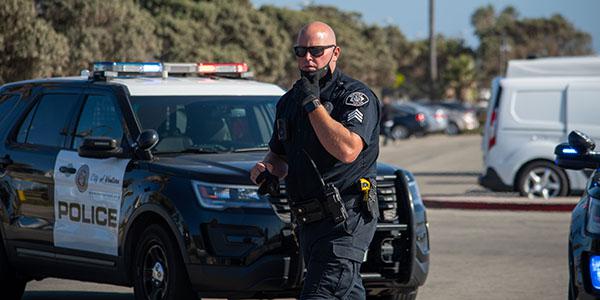NIST Develops Prototypical Radio
Engineers at the National Institute of Standards and Technology (NIST) have built a low-cost computer system that connects older public safety radios with the latest wireless communications networks, showing how first responders might easily take advantage of broadband technology offering voice, text, instant messages, video and data capabilities.
NIST’s prototype system could help overcome a major barrier to upgrading public safety communications. Many of the 4.6 million U.S. public safety personnel still use traditional analog radios, due to the high cost of switching to digital cellphones and these systems’ slow incorporation of older “push to talk” features that are both familiar and critical to first responders.
The NIST prototype connects analog Land Mobile Radio (LMR) handsets and towers with a Long-Term Evolution (LTE) server. LTE is the most widespread wireless standard that handles operations inside a broadband network. The LTE system is known as Mission Critical Push-to-Talk, which refers to essential aspects of public safety radios such as high availability and reliability, speaker identification, emergency calling and clear audio quality.
As described in a recent report, the NIST system has three main parts:
- Software-defined radio that interacts with the LMR signal interfaces and feeds that data into the next unit;
- An open-source software environment for managing software radio, which handles digital signal processing; and
- A user interface for LTE handsets, which allows LMR radio users to talk to LTE network users like they’re both on the same push-to-talk network, with calls initiated from either side.
NIST’s design goals included robustness, low cost and close conformance to existing and future standards. The physical equipment includes computer hardware that runs all three components, suitable software and an antenna. The computer must have an internet connection to the LTE system. The entire setup is about the size of a video game console plus a laptop or desktop computer.
The NIST system costs less than existing industry and government efforts to bridge radio and cellphone networks, according to a NIST press release. NIST researchers are continuing to work on the prototype, with plans to improve the interface to the broadband network and link to additional types of radios. To promote technology transfer, they intend to publicly release all capabilities on an open-source basis for use by anyone.
The work was made possible by the Public Safety Trust Fund, which provides funding to organizations across NIST leveraging NIST expertise in communications, cybersecurity, manufacturing and sensors for research on critical, lifesaving technologies for first responders.





Comments